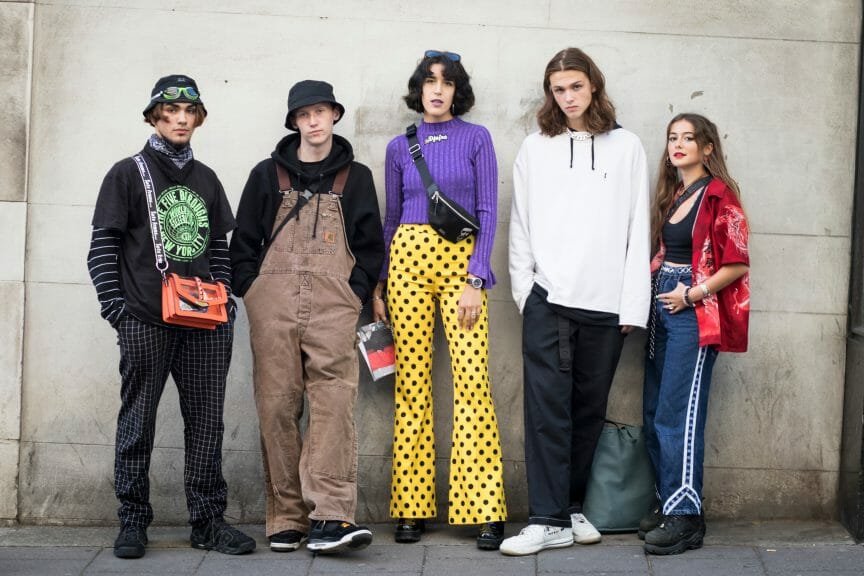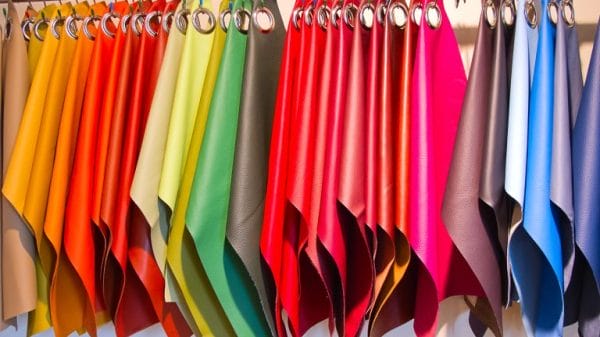High fashion, or ‘haute couture’ as it’s sometimes known, originated with the Parisian Upper class in the late 1800s. Streetwear, however, has grown from strength to strength since the 1980s.
It was a period where the under-represented defined for themselves what fashion is. There is no one look if we think about skaters, surfers, and hip-hop artists. Instead, there was a simple focus on individuality, accessibility, and comfort. But have these foundations of streetwear remained? Is the ever-growing collaboration between streetwear and high fashion corrupting the very inclusiveness which was once at its center? Or, has high fashion helped elevate streetwear to elite status, bringing prestige and economic growth to the style?
What is High Fashion?
Describing high fashion in terms of a singular style is impossible. Each company has unique brands and designs, from Prada to Dior to Balenciaga. However, what does encompass all high fashion brands is its consumer – the elite and very wealthy. Hermes bags are selling for $45,000, which seems like pennies compared to the Mouawad 1001 Nights Diamond Purse costing only $3.8 million. Exclusivity is also central to high fashion. For a company to be legally haute couture, it must: create custom tailor-made garments for clients, have at least 15 full-time tailors/sewers, use the best materials available, and create at least 50 designs a year. Traditionally, high-street fashion often takes inspiration from the runway. High-fashion looks of each season are re-imagined for everyday consumers. However, with the ever-growing influence of streetwear, is that balance beginning to shift?
What is Streetwear?
Streetwear emphasizes individuality and quality, similar to high fashion, but from a different angle. It originated in subcultures like hip-hop, skateboarding, and surfing and has no singular origin. Streetwear offered a versatile style and gained its exclusivity from high demand. It originated primarily in New York and California but is now defined by Japanese fashion internationally.
The sporty, athletic side of streetwear is often attributed to the influence of hip-hop. Sports clothes were breathable, flexible, durable enough for energetic dancing, and comfortable day-to-day. The flexibility of streetwear is one of its strengths, with the same practical comfort of the style aiding in its popularity with skaters also.
Streetwear is worth over 10 percent of the fashion industry’s overall 1.5 trillion USD valuation, making it a significant competitor to other styles.
Collaborations
With both styles, exclusivity is central. For high fashion, that status is accomplished through the staggering price. However, for streetwear, exclusivity was traditionally found through the rareness of the item. In streetwear, it’s all about knowing what’s cool and what’s not and how to find the best pieces.
Yet, since 2018, many high fashion brands have collaborated with streetwear designers to bridge the gap between the two looks. From Virgil Abloh working with Louis Vuitton to Kim Jones at Dior, these two spheres of fashion have been interlocked for years.
Some of the most significant crossovers of the last year have been the Spring 2022 Burberry x Supreme collaboration, in which Burberry’s quintessential plaid print was fused with the streetwear silhouettes of the Supreme tracksuits. These were amplified in popularity through the influence of celebrities like A$AP Nast seen wearing the collection. However, there were similar collaborations between Versace and Fendi, Adidas and Gucci, Louis Vuitton, and Nike. The list seems endless.
Effects
If we wanted to support high fashion/streetwear collaborations, we could argue that it supports inclusion, openness, and accessibility in an otherwise elitist fashion world.
However, in combining these two worlds, is streetwear not losing all its integrity as a style for everyday life? Whether high fashion is in collaboration with streetwear or not, it is still inaccessible to most people due to its insane price tag. Streetwear used to be a fashion-forward rejection of snobbery, but it has only exacerbated the problem by partnering with big businesses. Fashion brands are still made for only the ultra-rich.
I think the streetwear x high fashion market has become over-saturated. If every brand does the same thing, it ceases to be exciting or unique. While the first collaborations in 2018 were groundbreaking, now it’s time to move on and think of new, more experimental ways to comment on society through fashion. Fashion is constantly changing, and that’s what makes it such an exciting space. There’s no use repeating ideas again and again.
Let’s hope 2023 can bring us something new.













